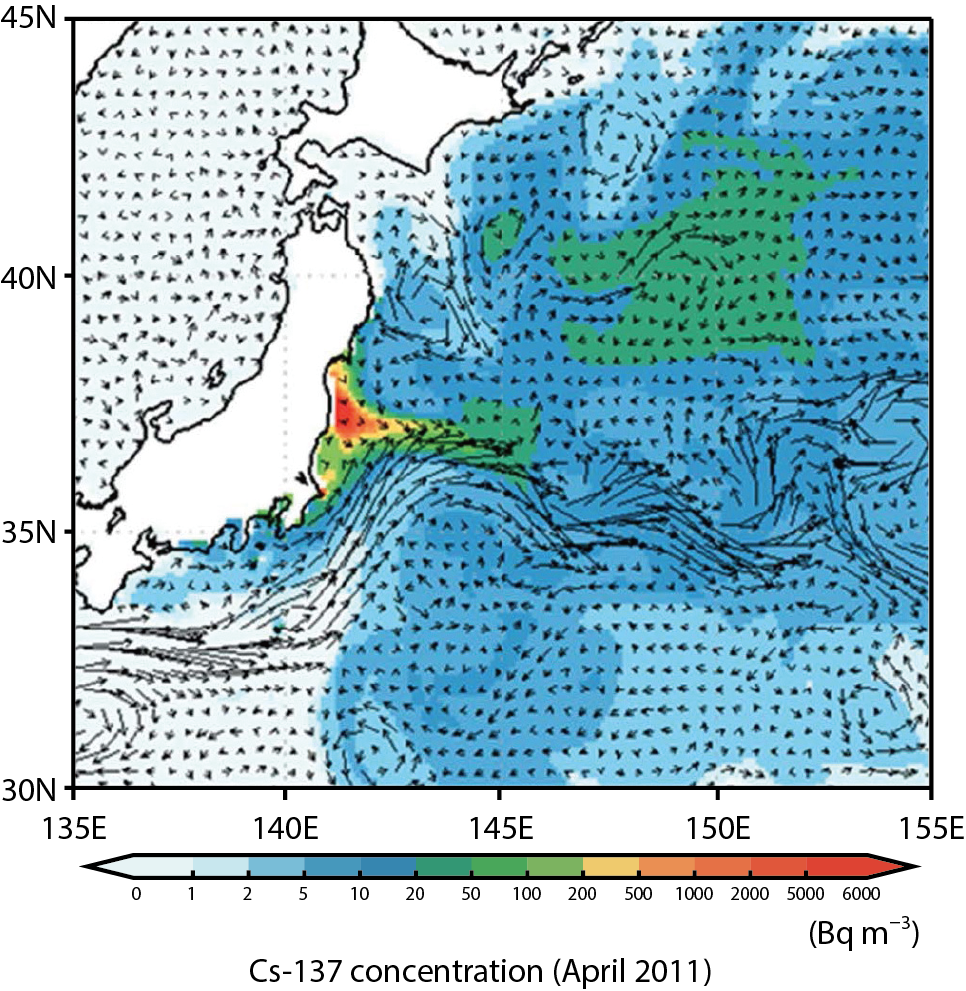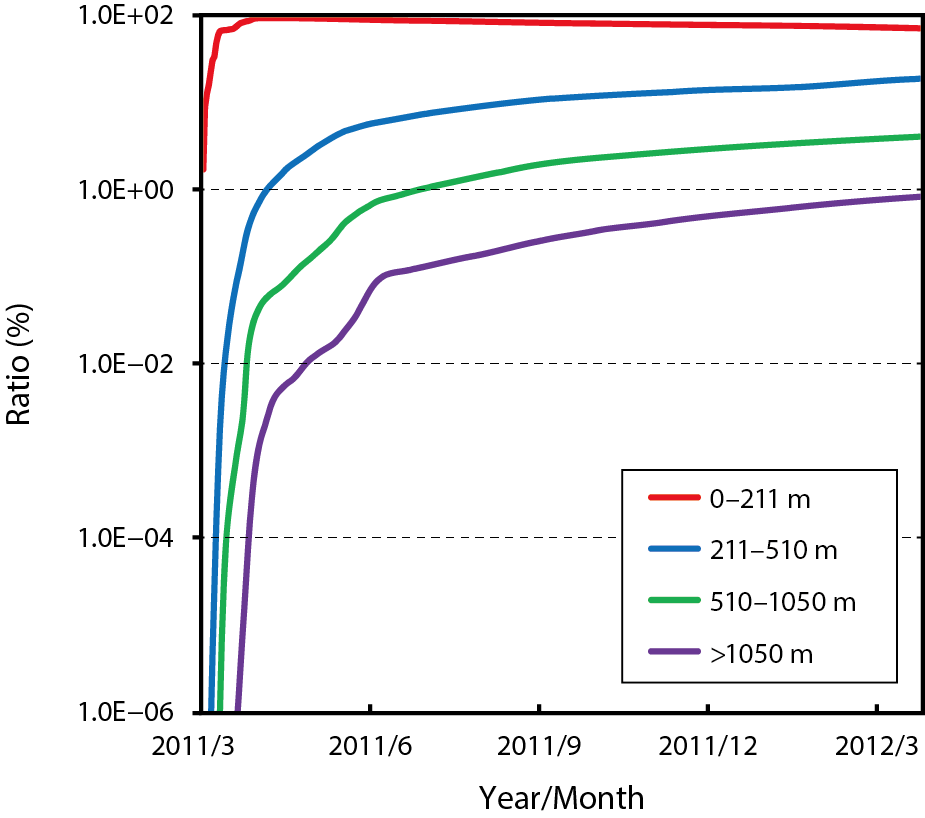
Fig.1-34 Averaged surface 137Cs concentrations in April

Fig.1-35 Time series of the ratios (%) of 137Cs amounts in the surface, intermediate, deep, and bottom layers to the total release amount of 137Cs
Cesium-137 (137Cs) was released to the ocean by the accident at the TEPCO’s Fukushima Daiichi NPS (1F). Many observational and simulation studies have been carried out to clarify the oceanic dispersion. Numerical simulation is a powerful methodology for understanding the spatiotemporal characteristics of oceanic dispersion of accident-derived radionuclides. Unfortunately, the quality of oceanic-dispersion simulations is degraded by uncertainties in the source term and simulated ocean currents. In this study, oceanic-dispersion simulations were carried out by an oceanic-dispersion model using output data from five oceanic general-circulation models. By comparing these simulation results, we objectively analyzed the effect of different oceanic data upon the 137Cs-dispersion simulation. Then, we analyzed the 137Cs dispersion from the coastal region of Fukushima to the North Pacific Ocean.
In this study, we applied the SEA-GEARN oceanic-dispersion model developed at JAEA. Input oceanic data were calculated by oceanic general-circulation models of the Japan Marine Science Foundation (JMSF), the Japan Agency for Marine-Earth Science and Technology (JAMSTEC), the Meteorological Research Institute (MRI) of the Japan Meteorological Agency (JMA), and the National Oceanic and Atmospheric Administration (NOAA). The data-assimilation method was applied to these oceanic general-circulation models to assimilate observed data into numerical simulations. The direct-release rate of 137Cs into the ocean was estimated by means of the observed sea surface 137Cs concentrations near the northern and southern discharge channels of 1F. To provide the 137Cs-deposition amounts at the sea surface, we conducted an atmospheric-dispersion simulation using the latest-estimated 137Cs release rate into the atmosphere.
Compared to the simulation with a lower horizontal resolution, the higher-resolution simulation reproduced well the 137Cs concentration observed in the coastline and offshore of Fukushima prefecture. The 137Cs was suggested to have been spread along the coast in the north–south direction during the first few months after the 1F accident. The simulations for the western part of the North Pacific and the whole North Pacific reproduced the main ocean current favorably using the data-assimilation method, despite the relatively low resolution. This suggests that the Kuroshio Extension plays a large role in the transport process of 137Cs from the coast to the outer ocean (Fig.1-34).
Analysis of the depth distribution of 137Cs by the dispersion simulation showed that most of that transferred to the ocean by direct release or deposition from the atmosphere existed in the surface layer (0–211 m from the sea surface) shortly after the accident. However, as time passed, it was transported from the surface layer to deeper layers (Fig.1-35). The 137Cs amounts in the surface, intermediate (211–510 m), deep (510–1050 m), and bottom layers (deeper than 1050 m) one year after the 1F accident were 71, 19, 4, and 0.8 % of the total release amount, respectively.
This study suggests that the accident-derived 137Cs was dispersed widely into the North Pacific and gradually dispersed from the surface to the deeper layers by simulations, regardless of the different ocean-current data. A future task is to carry out oceanic-dispersion simulations over the whole North Pacific for several decades to quantify the time-series change of 137Cs abundance.